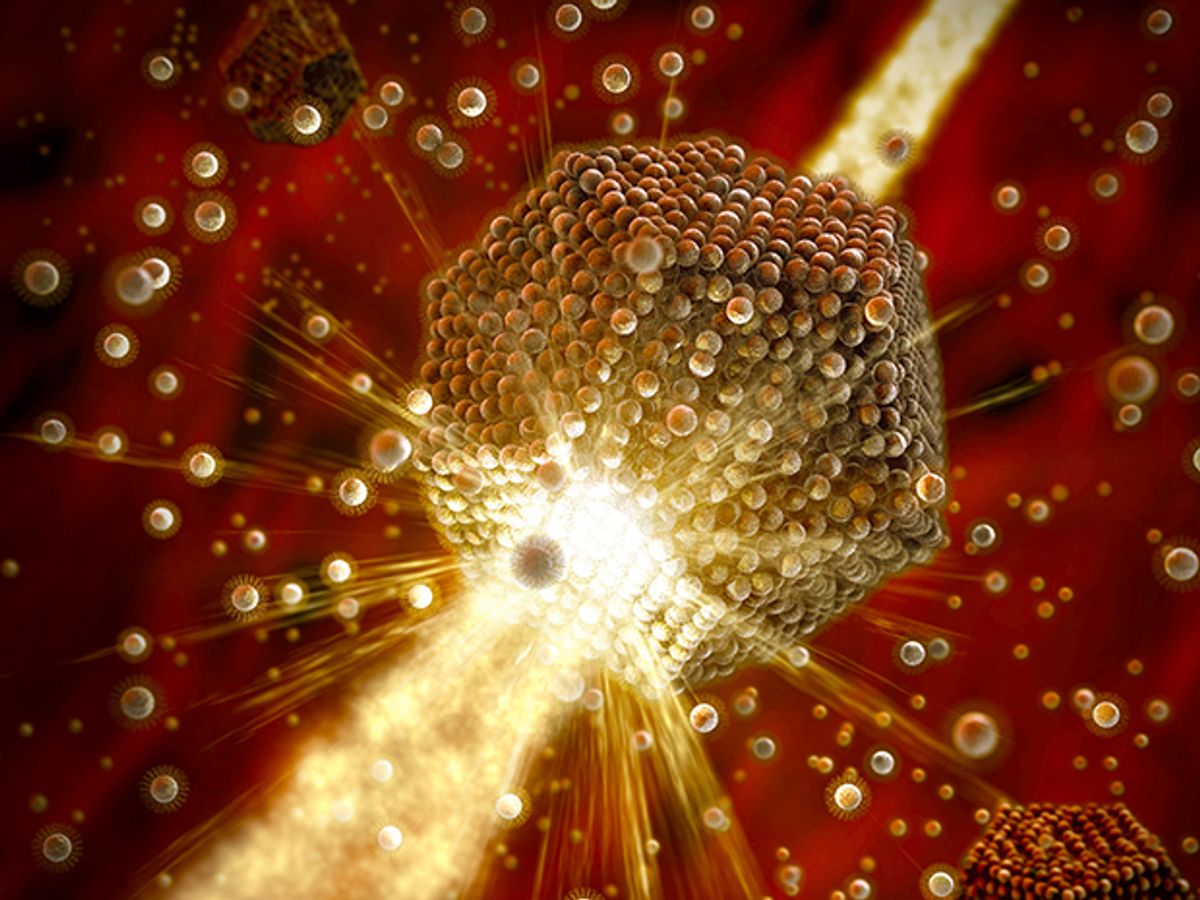For the first time, researchers have imaged the process by which nanocrystals rapidly form into superlattices. This new insight into how these nanocrystals form into superlattices in mere seconds could make it possible to better control their architecture, and in so doing, improve their electronic capabilities.
The process for forming superlattices, which are structures made of aligned, alternating layers of nanomaterials, has been around for decades. It has typically taken days or weeks for them to self-assemble into their final structures. However, last year, researchers at SLAC National Accelerator Laboratory and Stanford observed that these structures could form much more rapidly.
Now, in research described in the journal Nature, the SLAC and Stanford researchers used the X-ray beams at SLAC’s Stanford Synchrotron Radiation Lightsource (SSRL) to observe this rapid growth of nanocrystals and their formation into superlattices in real time.
“Explaining how this process occurs, how it is affected by synthesis parameters, and how we could exploit it to make the ordered assemblies, were the main points of our discovery,” said Matteo Cargnello, assistant professor of chemical engineering at Stanford and one of the paper’s authors, in an email interview with IEEE Spectrum.
This rapid growth behavior was initially observed while synthesizing palladium nanocrystals last year. That initial research also demonstrated that a similar mechanism is active in other metallic systems, such as iron, and in semiconductor materials, such as lead telluride.
“We now believe that this mechanism of nanocrystal growth and assembly is much more general, and potentially extends to many other colloidal systems with the only difference being the temperature and the conditions for nanocrystal growth, which depends on the material system,” said Cargnello.
Cargnello and his colleagues believe that imaging this crystal growth should reveal a method for better controlling it.
“Now that we understand the magnitude and the balance of forces involved, we are beginning to understand the criteria for inducing this self-assembly process,” Chris Tassone, the staff scientist who led the study with Cargnello, told IEEE Spectrum. “This can enable us to engineer this process in more complex systems, and potentially in systems which consist of more than one type of nanocrystal. That would result in more complex supercrystals with emergent properties.”
However, the scientists concede that before they can start down that path, they still need to spend a significant amount of time studying this self-assembly process in homogeneous systems.
“There are fascinating applications of these ordered materials that we still need to explore and understand—for example, how these tiny pieces of matter interact with each other, or how they could store energy/information, or how they could enable light harvesting and electronic transport in novel material assemblies,” said Cargnello.
The researchers acknowledge that there are still fundamental questions that remain unanswered, such as how the nanocrystals continue to grow while inside the ordered assemblies, and how to form assemblies containing multiple materials. Nonetheless, the researchers believe that this method of achieving ordered systems can make it easier to study these properties, and there could be interesting advances enabled by the knowledge they are gaining from this imaging.
The technique used for imaging this growth is called small angle x-ray scattering. It works by irradiating the solution containing the precursors with x-rays, and by analyzing the x-rays produced as a result of them “bouncing off” the materials (such as nanocrystals) contained in the sample. Because the scattering behavior of x-rays differs based on the size of the materials in a sample, it’s possible to understand how big these materials are in solution, how they increase their size, or how they get close to each other to form larger assemblies (superlattices).
“It is not a novel technique as it has been used for many years to look at nanocrystals in solution, but this is the first time that this technique is used to observe nanocrystals growing live in the same solution that is used in the lab to make them,” said Cargnello. “Because of the fact that we were observing the nanocrystals growing in real time, we were able to understand that while growing they would assemble into ordered materials (superlattices), while the nanocrystals kept growing in size.”
In future research, the scientists plan to develop continuous reactors for growing the structures and analyzing their properties.
Cargnello added: “We are particularly interested in catalytic processes, where these precise materials can be active for challenging transformations and selectively produce fuels and chemicals for a sustainable future.”
Dexter Johnson is a contributing editor at IEEE Spectrum, with a focus on nanotechnology.



